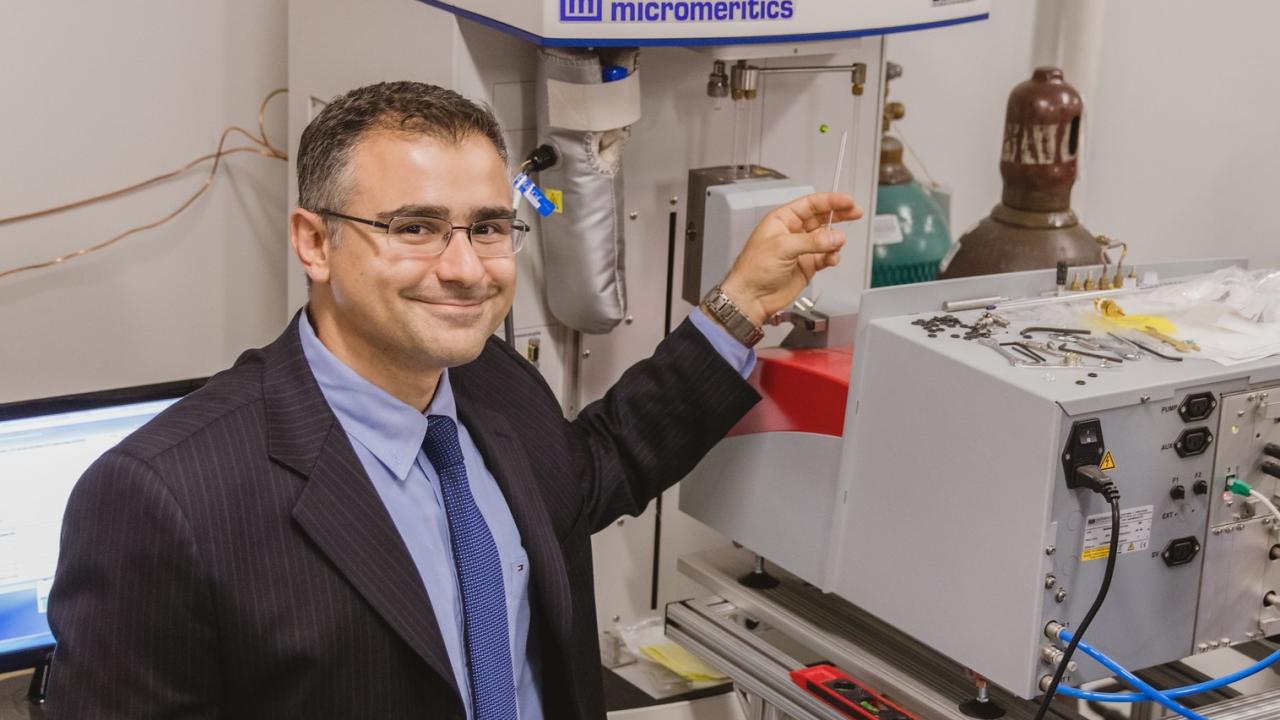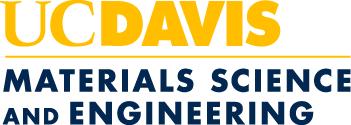
Ricardo Castro and the Science of Superheroes
Materials science and engineering (MSE) professor Ricardo Castro may not be as much of a “mad scientist” as Tony Stark and Bruce Banner in Avengers: Age of Ultron, but he does dare to ask intriguing questions like, “why must Thor’s hammer (Mjölnir) be thought of as a fictional item, unachievable in the real world?”
“Why can’t we let imagination take over our engineering designs?” he asks. “Perhaps the concepts behind Iron Man’s arc reactor could help us address our energy crisis, and maybe vibranium can inspire revolutionary materials for space exploration.”
Through an undergraduate course, an outreach program and his own research, Castro has turned the fantastic world of superheroes into a way to inspire students and scientists to achieve the impossible through engineering.
“The world of superheroes sets the stage for solid engineering education,” he said. “Immersing yourself in that universe can spark your creative instincts and allow you to think the unthinkable, and then use your engineering skills to make it a reality.”
The Power of Showing
Superhero movies and comics show a world only limited by the imagination. At the same time, a lot of iconic powers and technology are grounded in real research and are surprisingly close to reality. Castro uses this intersection of fantasy and reality to get students to seriously think about building even the most fantastic superhero items.
“Inspiration comes from showing,” he said. “Superhero movies in particular show a unique and fantastic world though CGI and it’s a good exercise to ask, ‘if this were true, what would be the engineering concept behind it?”
A good example is Iron Man’s arc reactor, which keeps Tony Stark alive and powers his super suit. Though it generates significantly more power, the arc reactor has a lot in common with atomic batteries. Atomic batteries also use radioactive decay to generate electricity, but power satellites in the real world.
“The arc reactor is a fantastic piece of engineering, if it would actually work,” he said. “We live in an upcoming energy crisis, so we have to have our eye on any possible energy solutions. This one is a really intriguing prospect to inspire novel technologies.”
Thinking about this is what led him to create “Materials Marvels: The Science of Superheroes” (EMS 2) in 2015. The undergraduate course introduces materials science and engineering concepts to first-year students through discussing superheroes, their powers and the science and engineering required to make them a reality. He continues to teach the course every year and has become a staple of the MSE curriculum.
“The course builds the foundation that learning to use your imagination is an essential part of being a successful engineer,” he said.
Superheroes and Science
Though Castro’s lab hasn’t pioneered their own arc reactor yet, they have turned to Captain America for inspiration in research. When working on a project that required a device that could absorb an impact and dissipate the energy, they looked to Captain America’s shield, which is shown to stop bullets, missiles and even Mjölnir without transferring that energy to Captain America himself.
To build the real-life shield, the team used a composite of piezoelectric crystals—which convert mechanical stress into electricity—epoxy resin and carbon nanotubes. The crystals absorb the impact and convert it to electricity, which is dissipated into a matrix of carbon nanotubes that make the material tougher instead of transferring energy to the user.
“The result was fantastic,” he said. “You could really see significant improvement of toughness from this electricity, and the energy being created and dissipated really scaling with impact.”
Castro laments that although it served to prove a concept, the shield was only of the size of a coin. Though he’s no longer working on this project, the shield became inspiration for other research pursuits, such as the search for the toughest transparent material on earth, now funded by the Army Research Office. It also inspired them to build a Captain America-sized fire-deflecting shield to demonstrate the power of materials engineering.
Inspiring the Next Generation
Castro keeps the porous-ceramic shield in his lab and brings it out for demonstrations in his classes and at the Material Advantage Student Chapter (MASC)’s annual Picnic Day shows. This shield particularly captured the imagination of Castro’s two sons, ages 6 and 8, which drove him to develop the Engineering Superheroes initiative, a proposed series of videos and activities that use superheroes to introduce kids to STEM.
Each episode focuses on one superpower and introduces the scientific concepts that would be needed to make it work. He then runs a fun and accessible experiment to further demonstrate the concept. The first episode, which will be available soon, focuses on his sons’ favorite hero, Captain America, and will explain how composites work using chocolates as examples. His goal is to create a series for K-8 teachers and parents to use to inspire their kids to pursue STEM, if he can find sufficient funding. The first episode is available now.
As he continues working on the series and teaching his class, Castro is excited to pass along his passion for superheroes so he might one day inspire others to make them a reality.
“While superheroes are an effective imagination catalyst, the important thing is creativity itself,” he said. “Engineering knowledge without creativity is incapable of generating innovation.”
